Combat supply operations
Jean Auran
Military commanders have always been concerned about supplying their forces on the ground. Determining stock levels, providing, distributing, and replenishing constitute the supply function. This article focuses on combat supply operations in a NATO environment from a French perspective.
Supplying armies in the field has always been a concern for military leaders – supplies include all resources required to maintain and support troops in the field. Likewise, logistics can quite easily become a headache for commanders depending on the terrain, especially in mountainous or desert areas; sustaining forces becomes even more critical in expeditionary missions. This article will examine supply operations through the prism of NATO’s policies and agreements.
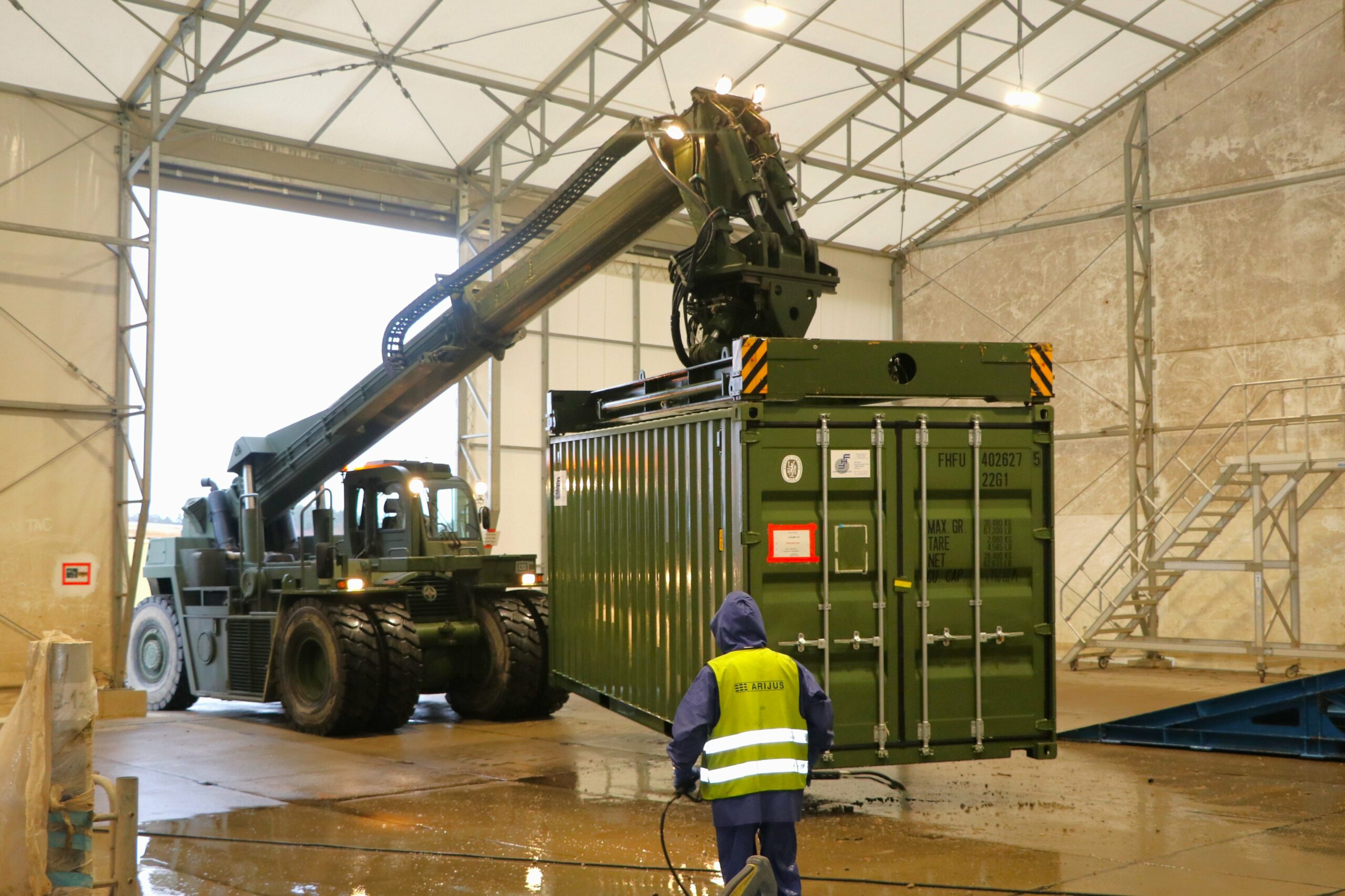
Credit: NATO Battle group Lithuania
Organising supply
Supplies in modern units are managed within sections and companies by sergeants and executive officers at the tactical level and by the S4, B4, G4, and J4 chain of all command posts. At its level, a battalion deploys with three days’ worth of fighting supplies. This inventory consists of supplies (food, gasoline, ammo). At the brigade level, the Combat Support Service battalion manages the second line. At the upper level, divisional support areas or the Joint Logistic Support Group (JLSG) stores most of the resources in mobile logistic nodes.
When a NATO operation or mission is considered necessary, NATO members and partner countries voluntarily provide the personnel, equipment and resources required for the task. Nations that provide contingents for an operation are referred to as a troop contributing nation (TCN). The TCN handles the deployment of its troops with a first allocation, and during the stabilisation phase. Contracts are awarded, and certain nations assume functions for the benefit of the whole force. A nation may assume the function of logistic role specialist nation (LRSN) under specific circumstances. This was the case when France provided fuel to the 40,000-strong NATO Kosovo Force (KFOR) in 2000.
The table below provides a summary of various categories of responsibility used by NATO:
| RSN | Role specialist nation. |
| LRSN | Logistic role specialist nation.
One nation assumes responsibility for providing or procuring a specific logistics capability and/or service for all or a part of the multinational force within a defined geographical area for a defined period. |
| LLN | Logistic lead nation.
One nation, based on its capabilities, agrees to assume responsibility for organising and coordinating a broad spectrum of logistics support for all, or part of the multinational force and/or headquarters within a defined geographical area for a defined period. The LLN can also operate as an LRSN at the same time. |
| SN | Sending nation. |
| N-NTCN | Non-NATO troop-contributing nation. |
| TCN | Troop-contributing nation. |
NATO supply classes
NATO’s supply classifications are widely accepted by most modern armies, and are split into five major categories:
- Class I: subsistence, health, morale, and welfare.
- Class II: equipment, vehicles, weapons, spare parts, medical and general supplies.
- Class III: fuel and lubricants.
- Class IV: fortification, construction, and engineering materials.
- Class V: ammunition, explosives, and chemical agents of all types.
Rations
Water, food, and rations are included in Class I. The Service du Commissariat des Armées (SCA) is responsible for providing this type of supply to units engaged in operations and/or on exercises. In this regard, STANAG 2937 is relevant because it aims to enhance interoperability of NATO military forces and partner nations’ individual operational rations. A ration provides nutritional requirements for a complete day and typically includes three meals (usually breakfast, lunch, and dinner). It was estimated that the energy expenditure of military personnel would be approximately 3,600 kcal per day for ’normal’ operations, such as peacekeeping, firefighting or construction work, and 4,900 kcal per day for special or long-range patrol forces. For standardisation of transport purposes, the rations are stacked on NATO-type pallets (1,200×1,000 mm).
Typically, armies around the world tailor their meals to national or ethnic tastes. Since 1986, France has used the Ration Individuelle de Combat Réchauffable (RCIR), designed to last for 24 hours with a validity period of two years; it includes two reheatable hot dishes and numerous freeze-dried products, including an energy drink and a solid fuel stove. Fourteen menus are available, including seven without pork. It also allows the soldier to avoid consuming the same meal twice a week. As much as 50% of French rations are labelled RSPO (Roundtable on Sustainable Palm Oil) and Marine Stewardship Council (MSC) for fish or come from organic farming or Fairtrade. The Commissariat des Armées is also working on the creation of vegetarian rations. The RCIR pallets are comprised of mixed cardboard boxes with seven different menus.
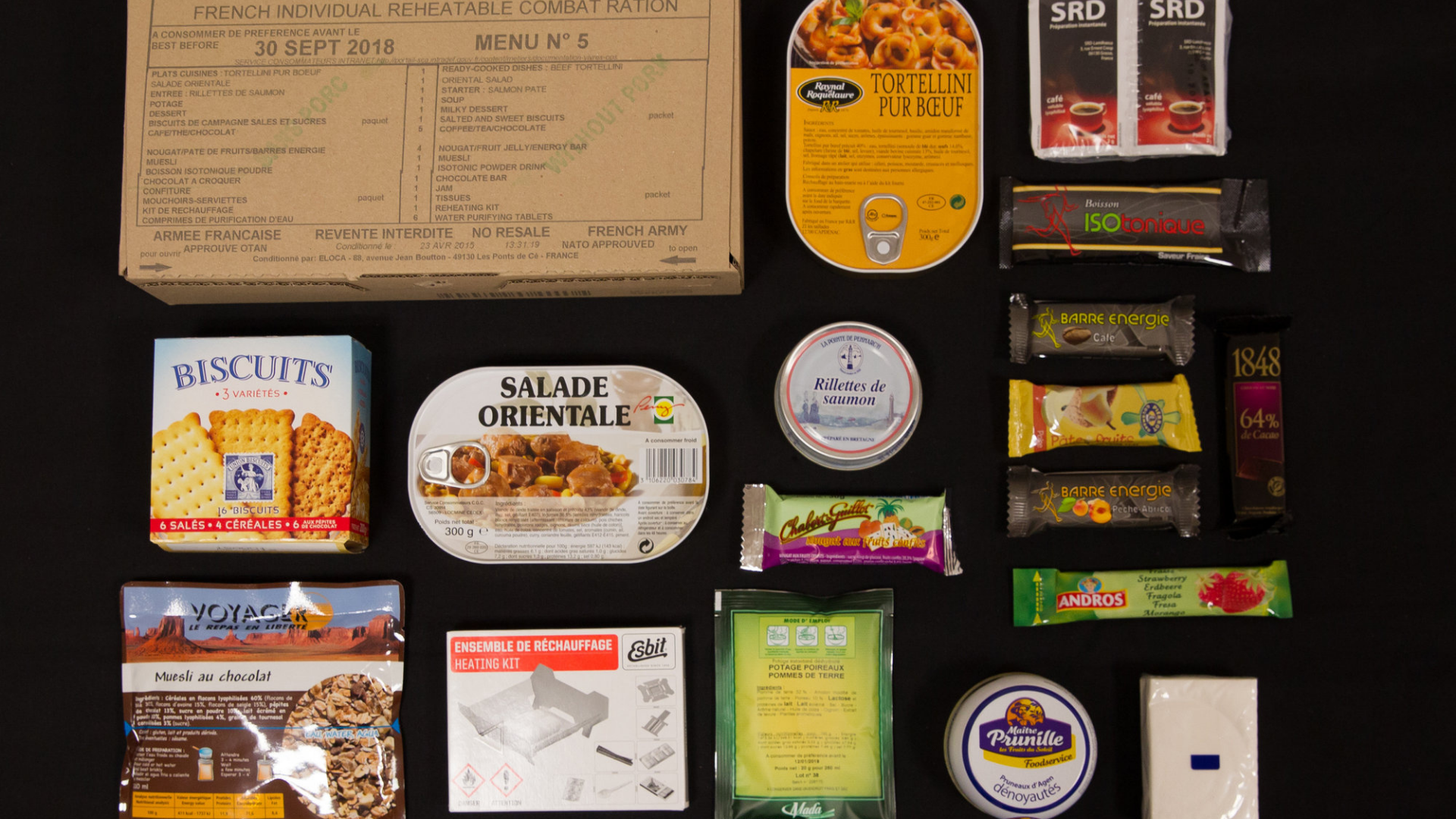
Credit: Armée de Terre
In 2021, the Pont de Cé military workshop produced 2.1 million combat rations. During the deployment of the French battalion in Romania, “Spearhead Battalion”, 8,000 RCIRs were immediately dispatched with 45,000 litres of water. Special purpose rations are tailored towards specific circumstances; these include survival rations, emergency rations, specialised long-range patrol rations, Arctic/mountain/cold and hot weather rations, and other rations that may be required for extremes of environment or for SOF.
The French Army has deployed mobile kitchens on trailers or containers during prolonged missions. The élément lourd de cuisson 500 (ELC 500) is a containerised kitchen able to provide rations for 500 personnel, and for smaller detachments, the French Army uses the RD3000-ETRAC trailer. While Western armies delegate food supply to the private sector when possible, France has been working closely with the Économat des armées (EdA), which runs catering in Abéché, Djibouti, Koulikoro and N’Djamena.
The US tends to outsource catering functions in many areas whenever possible. As a notable example, KBR Inc. handles food at Camp Lemonnier in Djibouti, Isa Air Base and Naval Support Activity (NSA) in Bahrain, and Navy Support Facility (NSF) Diego Garcia in the British Indian Ocean Territory. The Defense Logistics Agency (DLA) has helped supply over 163,293 kg (360,000 lb) of food for the 2023 Thanksgiving celebrations, which included 28,945 whole turkeys.
Water
Water is necessary for both military operations and human survival. To provide its soldiers with clean water during World War I, the American Army dug multiple wells in the area of Bordeaux and Tours where their forces were initially based. More recently, a total of 15 million litres of water were used annually by the French Barkhane Operation in Sahel. There are various kinds of water, but the most crucial is for human consumption or Eaux destinées à la consommation humaine (EDCH), supplied by either mobile water treatment plants or the civilian market.
The French Army uses the Station de Traitement de l’Eau Mobile (STEM), developed by Equans France and Suez, which produces an average of 6 m3 per hour of consumable water that can meet the needs of 800 people. It also treats seawater (with salinity from 15 to 35 g/l), brackish water, or water with low degree of contamination by chemical or bacteriological sources. In recent operations, the French Army has also distributed water using Tetra Pak packaging.
On naval vessels, there are three types of water: freshwater, intended for human consumption; distilled water, for the engines; and distilled water with additives, used for the cooling and refrigeration. The water produced on board comes from the sea and is desalinated by reverse osmosis, before being treated and tested to check the concentration of chlorine, minerals, and salts.
Fuel
The mechanisation of land forces has generated enormous fuel requirements, but the resource is often challenging to find and complex to transport. A soldier during the Second World War consumed 6 litres of fuel daily, while an American soldier needed 100 litres during the Gulf War. For Operation Barkhane, the fuel used in Mali came from Chad, the Ivory Coast, and Senegal – a distance of around 1,000 to 1,500 kilometres from the source to the user.
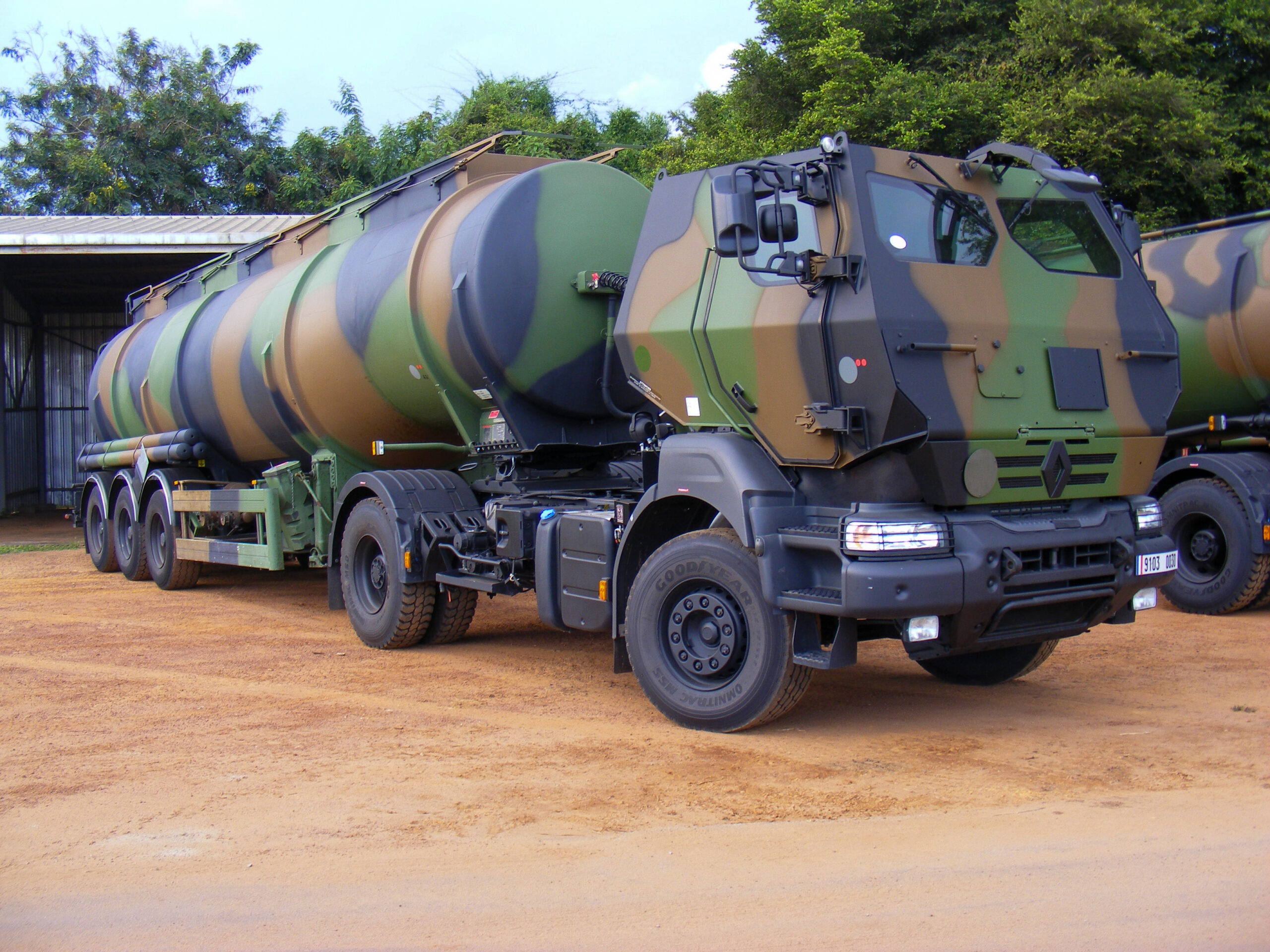
Credit: Jean François Auran
In France, the Service de l’Énergie Opérationnelle (SEO) supplies the entire armed forces with 2,000 military personnel and civilian workers. Class III includes fuel, lubricants, oils (POL) and all fluids needed to run vehicles and aircraft. Class III contains further subcategories, and includes aviation fuel and lubricants, for example. This class demands a fleet of specialised vehicles, mainly because of the European agreement concerning international carriage of dangerous goods by road (ADR). Refuelling a military force has never been easy, as demonstrated for example by the deployment of Pakistani trucks to support ISAF in Afghanistan. In 2019, the French Ministry of the Armed Forces consumed 835,000 m3 of oil products at a financial cost of EUR 667 million. Aviation use accounted for around 50% of the total consumption, while the Navy’s use accounted for around 25%.
NATO assumed responsibility for this subject several decades ago. There is a Petroleum Products Committee at the highest level, which is an advisory body responsible for all matters concerning petroleum products. NATO owns a pipeline network called the Central Europe Pipeline System (CEPS), which is more than 5,000 km long and crosses The Netherlands, Belgium, Luxembourg, France, and Germany. The Organisation established the CEPS to supply fuel to various air bases and depots for land forces in Central European member countries. In recent years, NATO forces have used a single type of fuel for both aircraft and land vehicles – the NATO-standard F-35 fuel – to simplify logistics and ensure security of supply.
Today, fuel storage is typically provided by both solid (such as lined concrete) and flexible (such as impermeable textile) above-ground storage tanks in temporary depots. The French Air Force used temporary depots during operations in North Africa, particularly in Chad. Another example is the US onboard Amphibious Assault Fuel System, which allows offshore vessels to supply units located on shore as part of an amphibious operation.
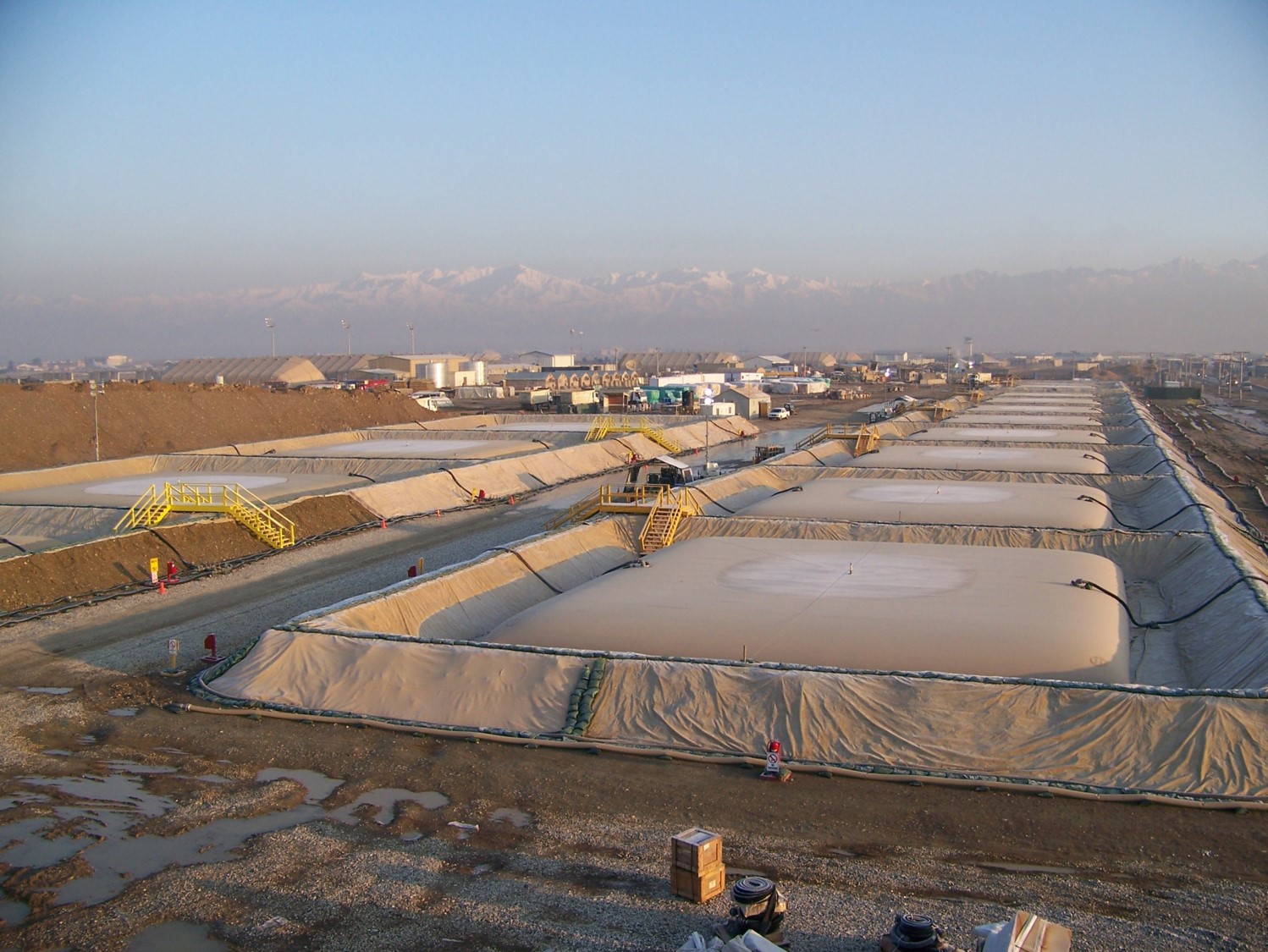
Credit: US Army
The table below provides some common examples of fuel products distributed:
| F-34/F-35 | Jet fuels. |
| F-44
|
High flash point type jet fuel, XF-43, with a corrosion inhibitor additive and lubricity improver, S-1747, and anti-ice additive S-1745. |
| F-54 | Diesel fuel, for use in compression ignition engines. |
| F-63 | Jet fuel used for land vehicles instead of diesel. |
| F-67 | Unleaded gasoline fuel used in spark ignition engines, including two-stroke engines. |
| F-76 | A mixture of hydrocarbons from crude oil refining. |
| XF-81 | Light marine diesel. |
Ammunition
On the battlefield, ammunition is loaded using a palletised loading system or flat-rack system. Combat units tend to have sufficient dedicated transport vehicles to transport ammunition, the greater problem is the quantities of ammunition and propellant available in stockpiles. In theory, French ammunition stocks should meet the needs for a major conflict plus three years of training. However, a parliamentary report recently stressed that stockpiles of propellant charges are very low. France’s artillery troops receive 20,000 propellant charges annually for training, which is equivalent to one week of the consumption observed in Ukraine.

Credit: Eurenco
The time between order and delivery of ammunition also needs to be shortened – presently it can take between 10 to 20 months for a shipment of 155 mm explosive shells to be delivered, 24 to 36 months for 155 mm BONUS shells, about 24 months for MMP missiles and AASM kits, 36 months for Meteor missiles, and four to five years for Exocet missiles. Twenty-five NATO members have signed the European Defence Agency (EDA) project agreement for collaborative procurement of munitions. The project paves the way for two procurement tracks for: a two-year accelerated procedure for 155 mm artillery shells, and a seven-year project to buy several different types of ammunition. Thus far, 24 EU Member States plus Norway have signed on, and other NATO members have expressed their intention to join the initiative after finalising internal procedures.
Aside from procurement costs, maintaining various complex munitions in an operational condition can also come at a significant cost. In this regard, France annually spends an approximate EUR 2 million on SCALP missiles and EUR 7.5 million on the Exocet family.
With regards to other calibres of ammunition, NATO’s primary focus for years has been the standardisation of small-calibre munitions. For the French Army, all NATO-approved 5.56 mm ammunition is compatible with their newly-selected HK416. However, NATO small-calibre standardisation is likely to face challenges as a result of the US Army’s selection of a new cartridge, the 6.8 × 51 mm (.227 Fury) under the US Army’s Next Generation Squad Weapon (NGSW) programme. Although very similar in terms of dimensions to the 7.62 × 51 mm cartridge, this SIG-developed cartridge is intended to operate at higher chamber pressures, translating to a flatter shooting profile, improved muzzle velocity and greater energy on target at typical engagement ranges. While improvements are broadly a good thing, a major actor such as the US selecting a non-standard munition can greatly complicate the work of logisticians.
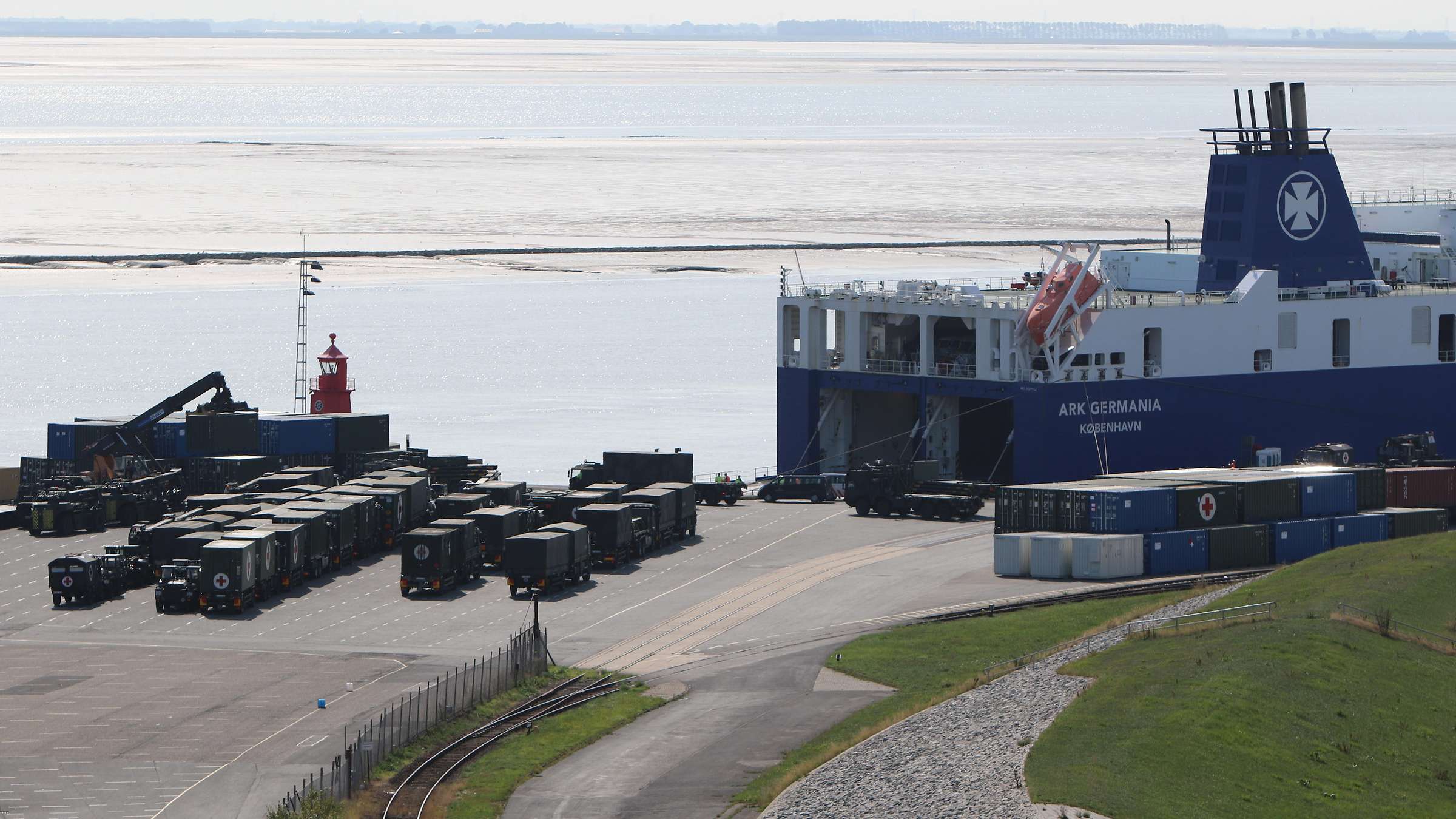
Credit: Bundeswehr/Christoph Vietzke
The conflict in Ukraine has clearly shown the challenges of maintaining operational supply lines in wartime. While NATO’s strength as a collective defence organisation lies in its ability to pool limited resources, the European Union is also making an effort to acquire or enhance its own production capacity. Training can also help to overcome supply challenges, and in this regard, exercises such as NATO’s ‘Capable Logistician’ are crucial.
Jean Auran





